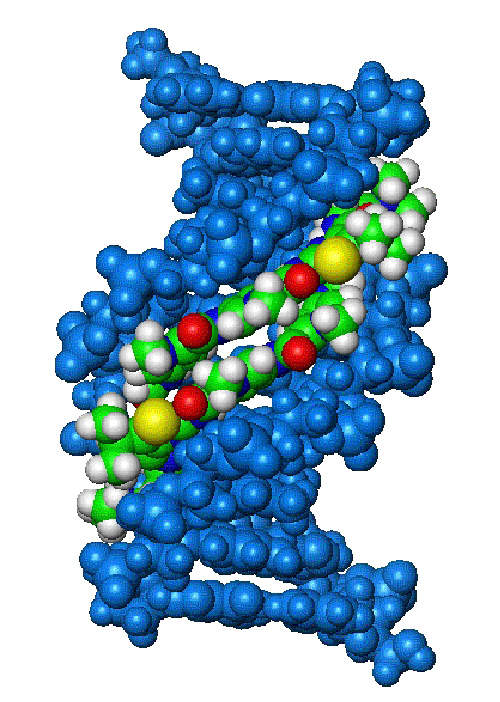Professor Colin Sucking discusses the work undertaken at the University of Strathclyde that explores the combination of medicinal chemistry and chemical biology
It’s easy to challenge academics over the relevance of their research to society and its significance for the future. My specialisations of medicinal chemistry and chemical biology, which I develop through heterocyclic chemistry, are as much open to challenge as anything else.
To the general challenge can be added to the question of why do you research medicinal chemistry and drug discovery in a university when there is such a large and well-funded pharmaceutical industry to do just that? Well, even senior industrialists have said to me that they honestly can’t do it all, especially when their drivers are largely commercial.
So in our projects at Strathclyde, we try to tackle problems in drug discovery and chemical biology that have distinct differences from common industrial projects. And we not only try to find new, highly active compounds but also establish how they work. This is the double vision of the title, the combination of medicinal chemistry and chemical biology. The applied translational science centres on the medicinal chemistry and the basic science on chemical biology.
If, in addition, anyone should doubt that heterocyclic chemistry, or the chemistry of compounds containing rings with atoms other than carbon, is at the centre of contemporary international chemical discovery, the evidence in terms of published scientific output is strong. I have just returned from a series of scientific meetings in India in which 90% or more of the contributions included heterocyclic compounds.
Further, most of the scientific papers that come across my desk from major international journals for review deal with heterocyclic compounds in some way. I’ve written some e-books to explain to the layperson what heterocyclic chemistry is and how it works – most recently ‘Why does heterocyclic chemistry matter?’.

There are fashions in science just as much as in any well-populated walk of life. Sometimes they are associated with following up genuinely new discoveries that are of long-term significance. Perhaps the discovery of the structure of DNA is the strongest example of this in the context of heterocyclic chemistry. Other times there is a neat new idea for which the significance is exaggerated by the discoverers hoping to get more recognition for it.
Although heterocyclic chemistry has been around a long time this does not mean that there is no longer any interest or value in heterocyclic chemistry, quite the contrary. It’s precisely because it is mature and capable of making highly sophisticated designed chemical compounds that it retains power and importance in science. New compound classes have been discovered with value in many different applications ranging from therapeutics to television screens.
In both of these applications and everything on the spectrum of technology in between, there are new developments that depend upon heterocyclic chemistry. Here I want to point out not the physical manifestations of the chemistry in terms of compounds in bottles but a relatively new and powerful way of thinking about not only chemistry but also biology. From this approach, important new discoveries can emerge, as has been realised worldwide. It’s an important aspect of how we structure and build our research programmes in health care at the University of Strathclyde.
To unpick the philosophy a little, let us take a step back in time. According to John Henry Newman’s “Idea of a University”, each subject should look after itself drawing its own boundaries and, by implication, guarding them. That 19th-century concept is quite the opposite of how we need to think today. New things and useful things happen at the interface of conventional scientific disciplines and when these disciplines mix. This is by no means a new idea either but what has changed that is relevant to heterocyclic chemistry is a relatively new sub-discipline called “chemical biology”.
Chemical biology has become an extremely important area in the application of heterocyclic chemistry. Essentially what it does is to use small, specially designed and synthesized heterocyclic compounds to investigate how the big molecules of biology work together. Put another way, the heterocyclic compounds probe the mechanism of action of biological systems. Because, as I’ve explained before, the structure of a heterocyclic compound can be exquisitely tuned to its purpose the chemical biological approach is a powerful way to investigate significant aspects of basic biology.
What I find most attractive about chemical biology from the point of view of an academic scientist interested both in basic science and practical applications is that it bridges these two endeavours. In our own work, for example, we have designed some anti-infective compounds to be fluorescent so that we can follow their passage in the target infectious agent, typically a fungus or a parasite. This gives us important information about how our compounds work.

One of these compounds is now in a phase 2a clinical trial for the treatment of Clostridium difficile associated diarrhoea.
Related compounds are being studied for veterinary applications such as Animal African Trypanosomiasis.
When I was in India, in January 2019, I concluded details of a collaborative project with the National Chemical Laboratory in Pune to seek treatments for Leishmaniasis, a parasitic disease that remains a problem in rural India. In another field, we have some very effective potential therapeutic compounds that treat inflammatory diseases but until recently, we did not understand how they worked.
Thanks to a collaboration with the U.S. Army Laboratory, AMRID, we have found out a good deal about their mechanism of action using a variety of techniques within the chemical biology domain. In both cases, if we’d simply kept our heads down as chemists we’d have made little progress.
Because we’ve opened out into chemical biology to complement our medicinal chemistry studies, however, we have potentially a much more useful product because we know how it works. It’s the double vision of therapeutic effectiveness and mechanism of action. So it’s not just what you do in the laboratory, it’s the way that you think about it too.
Professor Colin J Suckling OBE DSc FRSE
Research Professor of Chemistry
Department of Pure & Applied Chemistry, University of Strathclyde
Tel: +44 (0)141 548 2271
https://www.strath.ac.uk/chemistry/
*Please note: This is a commercial profile











